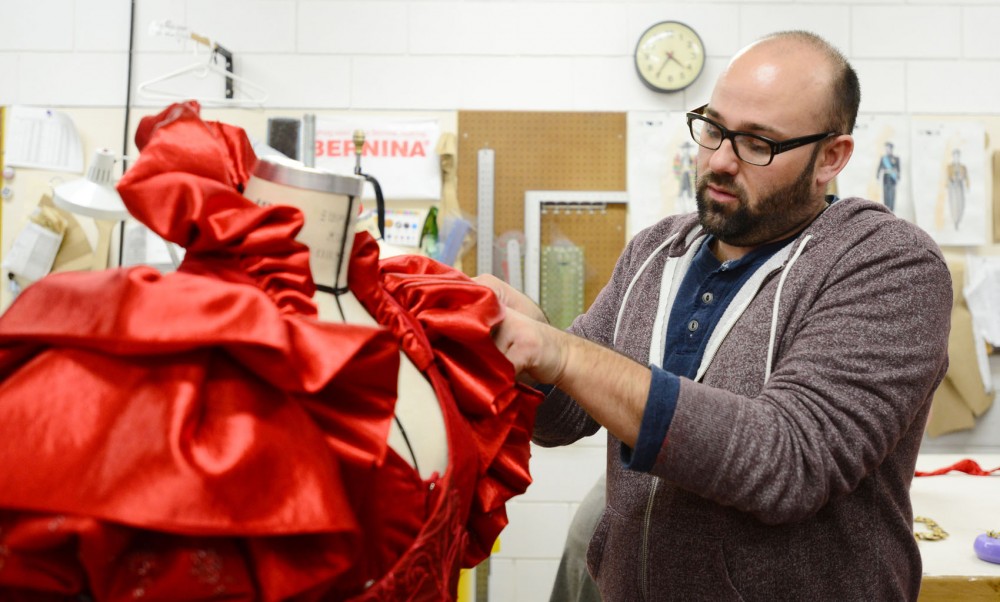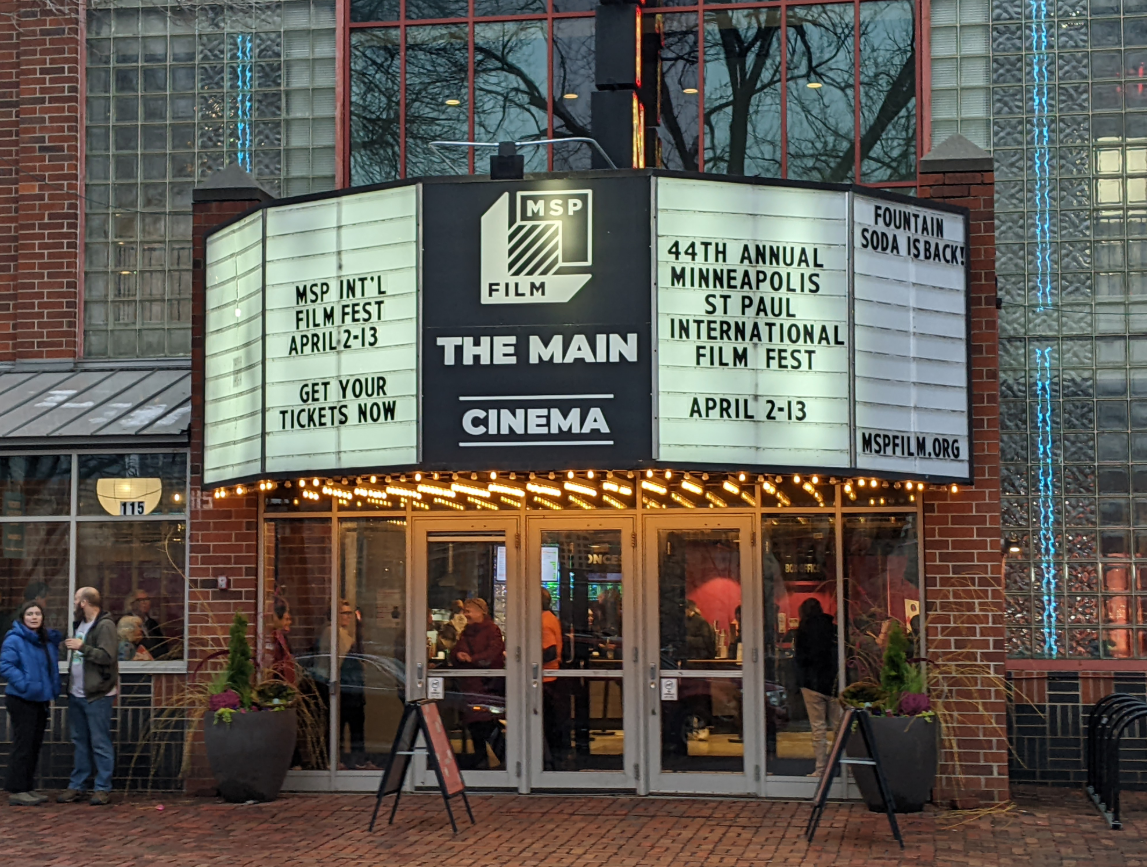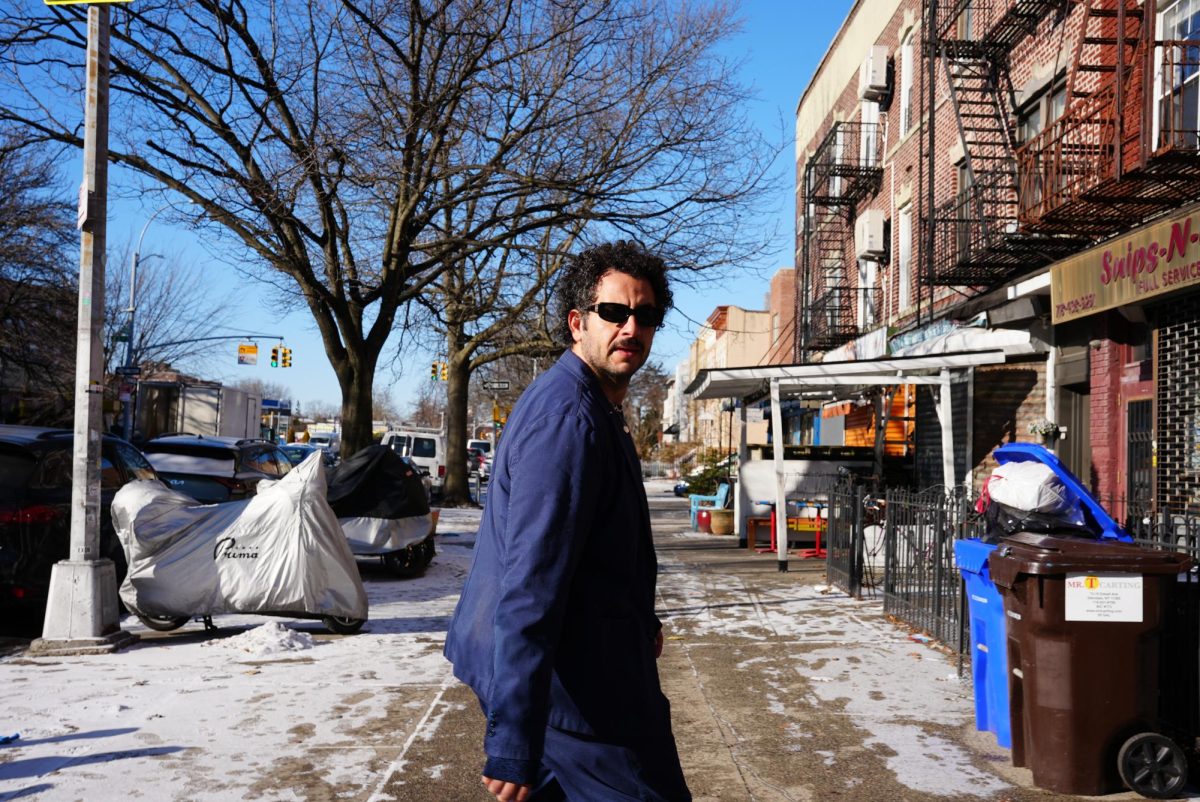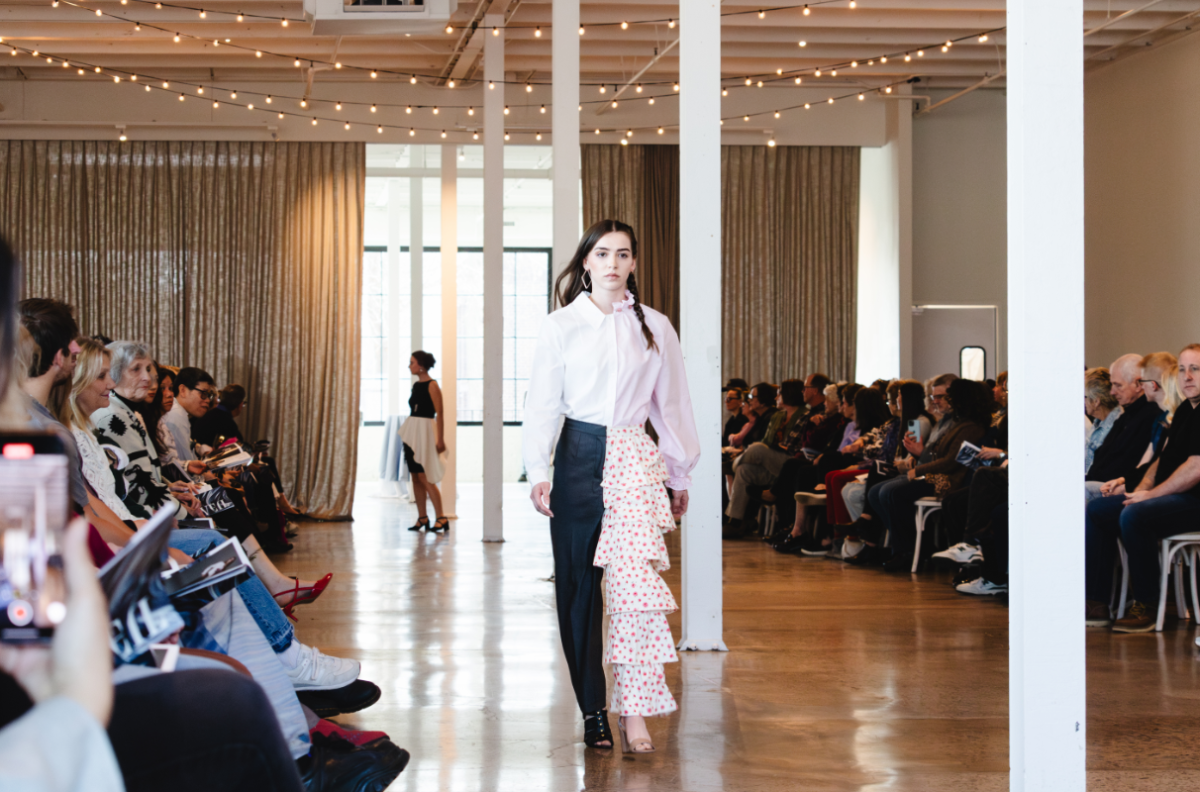What: “The Rover”
When: Nov. 1-11
Where: Rarig Center, Stoll Thrust Theatre, 330 S. 21st Ave., Minneapolis
Cost: $10, $5 for students
Jonathan Singer is a producer of his own kind, a maverick in the world of fabric. Having been a theater enthusiast for the majority of his life and having tried both acting and movement, the artist has found his niche in the design world. Most recently, he’s put his prowess to test as the costume designer for the University of Minnesota’s Department of Theatre Arts and Dance production of “The Rover.”
This 17th century play is a fusion of romantic comedy, sexual buffoonery and vindictive drama, with the costumes attesting to each representation. The fundamental idea was to garner inspiration from the periods beyond the 17th century and to in turn apply them to the actual clothes of the time period, which is a recognizable trait of the costumes.
For Singer, repurposing was his main craft, using bits of old denim skirts and buttons from former costumes to put meaning into the word bricolage through every piece.
Costume clothes need to be able to withstand the rigors of on-stage action, like dancing, leaping and sword-fighting. Many of the show’s costumes use polyester and denim as their constructive element, which Singer found from thrift stores and fabric outlets. Additionally, the Guthrie Theater donated some costumes.
Singer’s use of satin corsets, 18th century-influenced military jackets, fur boot covers, embellished denim vests and brocade floral capes are all items to watch for. They reflect the wild and wooly nature of the characters, each constructed in a way that is very raw.
The rendering process for each costume was an elaborate collaboration between the director and the designer: the director’s developed persona for each character and the designer’s execution of each through fabric and embellishments. For “The Rover,” Jonathan did preliminary sketches of his vision for the costumes, showed them to director Joel Sass and the two agreed on how each character should be presented to the audience. “As far as costumes go, they become an actor as well,” says Singer.
The actor and costume combine to represent the entirety of the character, which is precisely what Singer wanted.
“The character Willmore is described in a line as ‘smelling of tarn rope,’ and I wanted his costume to express the quality and feeling of that,” he said. He poignantly represents the essence of each character through bits of denim, polyester pieces, paint and embellishments.
A particular intrigue lies in the hint of haute couture visible in the elaborate wardrobe of the character Angelica Bianca: a femme fatale in all the sense and a high-end prostitute in the flesh. Singer’s idea of storytelling through costume is exemplified in this character’s final scene. Bianca is clad in a fiery red bodycon of crepe satin and velvet overlay, shielded by a jacquard-print cape built of layers of metallic stretch knit, and a mask fit for the finest masquerade. The character hurls the cape off near the end of a scene, revealing her burning bodycon beneath and embodying the idea of her bleeding heart, the art of symbolism at its finest.














